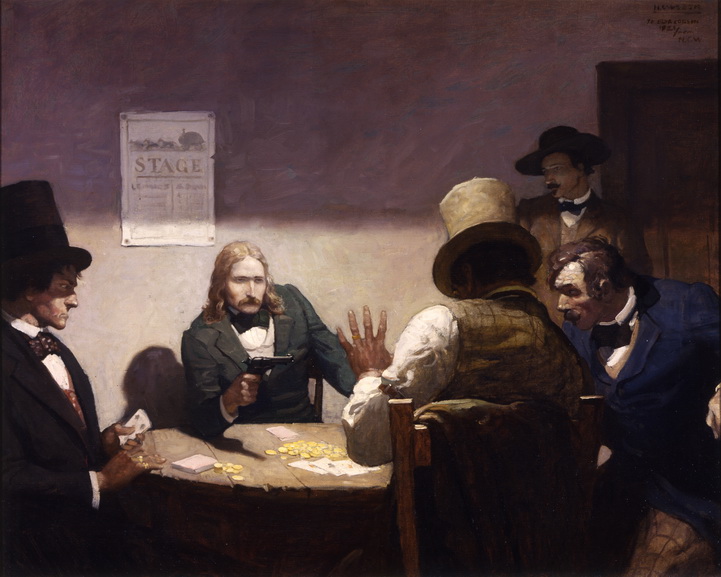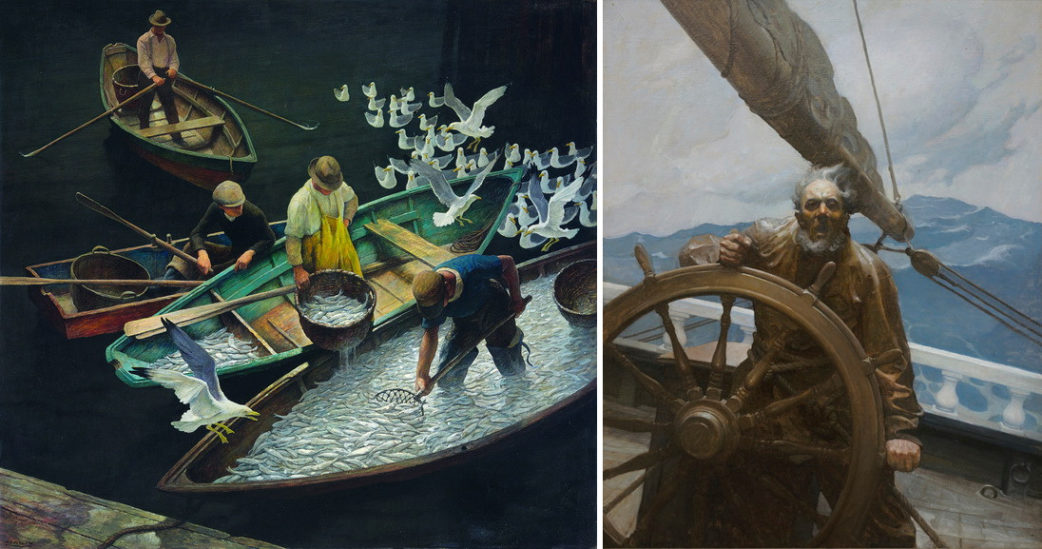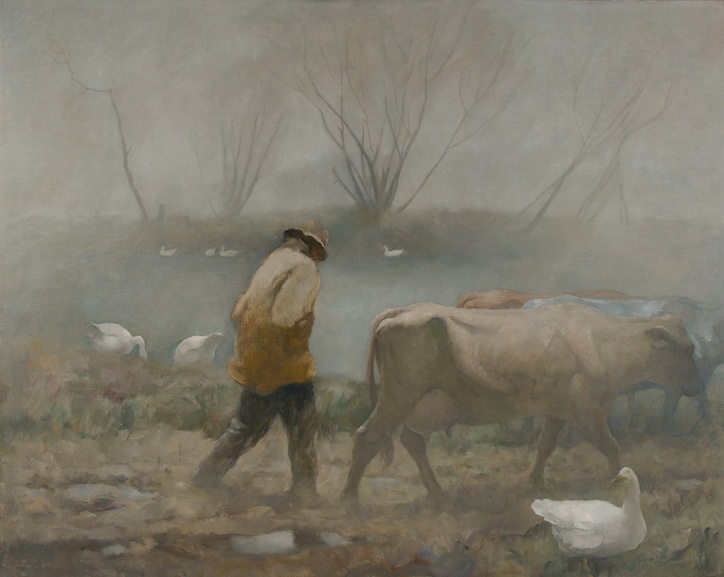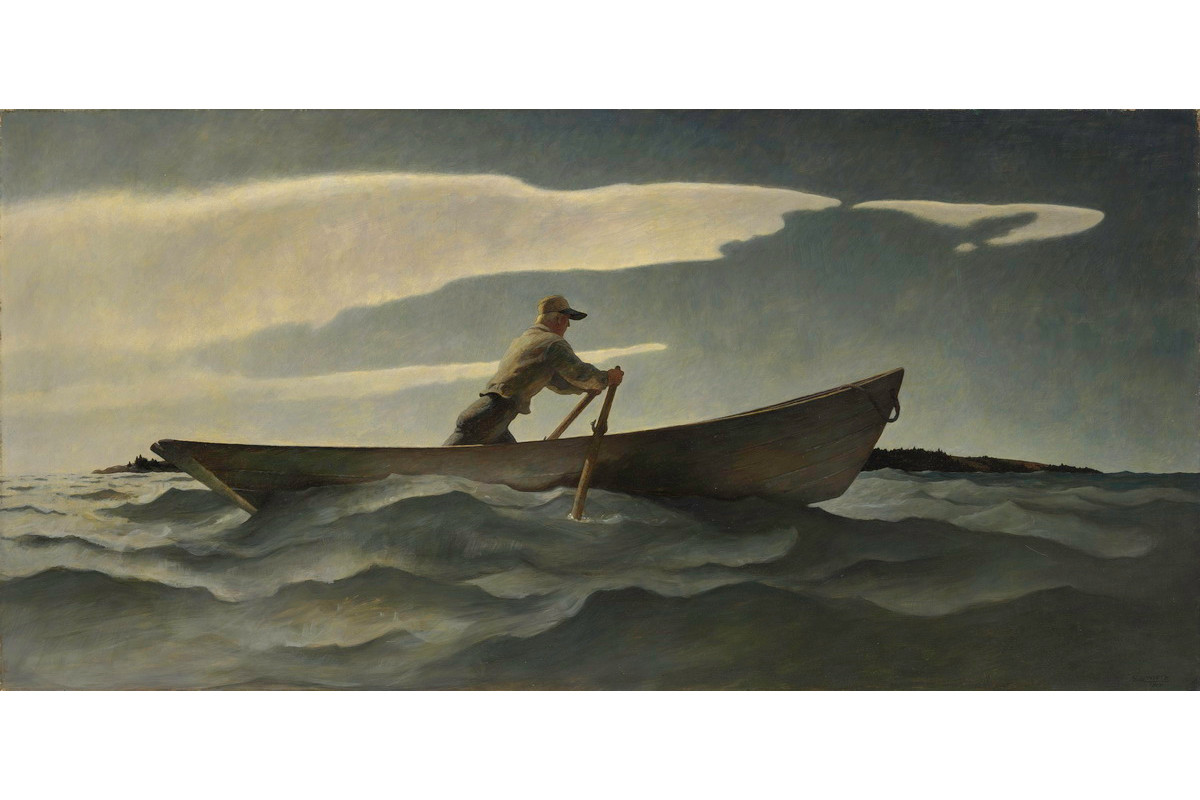[ad_1]
The beginning of the 20th century was marked by the rapid growth of the United States, especially when it comes to the processes of urbanization and industrialization. However, an array of artists active at the turn of the century were mostly exploring the extensive beauty of American wilderness, but there were also the ones who were also fascinated by the specificities of the local social milieu. An exquisite painter who managed to articulate all the trends and build an authentic practice was Newell Convers Wyeth, better known as N.C. Wyeth.
Namely, new visual interpretations of the classic stories such as The Boy’s King Arthur, Treasure Island, and The Last of the Mohicans made him a prolific artist who was able to express himself equally regardless of the media and the genre (landscape, portraiture, still life). An outstanding colorist, N. C. Wyeth was so versatile, and well aware of the new tendencies in advertising and popular culture, that he was capable of exploring and delivering various themes throughout the first four decades of the 20th century.
In order to honor the work of this artist and pioneering illustrator, the Brandywine River Museum of Art is hosting a proper retrospective titled N. C. Wyeth: New Perspectives, the first survey in five decades to examine thoroughly Wyeth’s multifaceted oeuvre.

The Grand Retrospective of N.C. Wyeth
N.C. Wyeth was born in Massachusetts, and his ancestors were prominent participants in various wars, meaning that the family history was transferred through the Wyeths’. The young Newell was reasonably inspired by those narratives; his mother supported him to pursue the career of an artist, so he attended the Mechanics Arts School, and then the Massachusetts Normal Art School (Massachusetts College of Art and Design), where he was encouraged by his tutor Richard Andrew to become an illustrator.
Wyeth’s first commission as an illustrator was the cover of The Saturday Evening Post in 1903. The following year, the same magazine commissioned him to illustrate a Western story, and so he decided to go West to experience the lifestyle; he worked as a cowboy in Colorado, and he visited the Navajos in Arizona in order to get closer to the Native American culture. Two years later, Wyeth undertook the similar trip and learned about mining; these trips to inspired him to produce images of cowboys and Native Americans. Later he made the idyllic farm scenes for Scribner’s and found landscapes equally challenging, also less dramatic.
Around 1911, Wyeth departed from Western subjects and started illustrating classic literature. During that period he made a series for an edition of Treasure Island (1911), by Robert Louis Stevenson, Kidnapped (1913), Robin Hood (1917), The Last of the Mohicans (1919), as well as several other editions, and he released a series of commissions for various magazines such as Harper’s Monthly or The Popular Magazine. In the following years the prolific illustrator also did calendars, posters, and advertisements for Lucky Strike, and Coca-Cola, and Cream of Wheat, and paintings of iconic composers for Steinway & Sons; Wyeth painted historical and allegorical murals for the First National Bank of Boston, the Hotel Roosevelt, Federal Reserve Bank of Boston, the Westtown School, and other institutions, and his images were used during both World Wars in propaganda purposes.
In 1945, Wyeth produced an impressive series of murals for the Metropolitan Life Insurance Company and he received the honorary degree of master of arts from Bowdoin College.

The Installment
The upcoming exhibition is jointly organized by the Brandywine River Museum of Art and the Portland Museum of Art. It will encompass seventy paintings and drawings selected from the leading museums and private collections.
Namely, the audience will be able to see the iconic illustrations Wyeth made for books and magazines, along with the impressive landscapes and figurative works. The selection will indicate Wyeth’s connection with Impressionism throughout the 1910s and 20s, as well as with American Regionalism (proposed by Thomas Hart Benton and Grant Wood) and Modernism from the late 1920s through the mid-1930s. One of the highlights on display will be the famous painting Island Funeral made by the artist in 1939, one of his most complex narrative compositions.

N. C. Wyeth at Brandywine River Museum of Art
The upcoming exhibition will tends to underline Wyeth’s ability to achieve emotional power through composition and light effects, as well as his outstanding versatility in shifting from one media to another.
The illustrious catalog will accompany the show and it will include significant essays written by distinguished scholars offering fresh interpretations of various aspects of his work. Here is important to mention that the museum is just the first of three national venues for this exhibition; N. C. Wyeth’s own home and studio are under the care and run by Brandywine and are open for public tours daily.
N. C. Wyeth: New Perspectives will be on display at Brandywine River Museum of Art from 22 June until 15 September 2019, and then it will travel to the Portland Museum of Art in Maine (October 4, 2019–January 12, 2020) and the Taft Museum of Art in Cincinnati, Ohio (February 8, 2020–May 3, 2020).
Currently on display at the museum is a coinciding exhibition titled N. C. Wyeth: A Personal Perspective, which features a collection owned by the artist and author Douglas Allen. It will be on display at the Museum until 8 September 2019.
Featured images: N. C. Wyeth – In Penobscot Bay, 1944. Tempera on hardboard, 23 1/4 x 47 1/4 in. The Metropolitan Museum of Art, New York. Gift of Amanda K. Berls, 1975. © The Metropolitan Museum of Art / Art Resource, NY; N. C. Wyeth – The Harbor at Herring Gut, 1925. Oil on canvas, 43 x 48 1/8 in. The Andrew and Betsy Wyeth Collection; N. C. Wyeth (1882-1945) – Island Funeral, 1939. Egg tempera and oil on hardboard, 44 1/2 x 52 3/8 in. Brandywine River Museum of Art, Gift of E. I. du Pont de Nemours and Company in honor of the 50th Anniversary of the Brandywine Conservancy & Museum of Art, 2017.
[ad_2]
Source link

